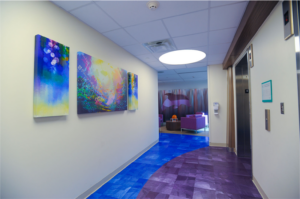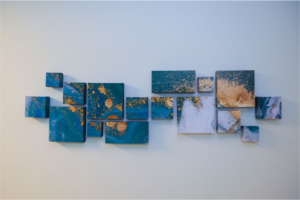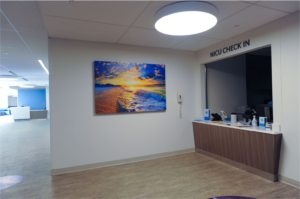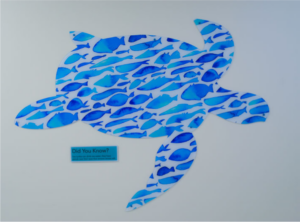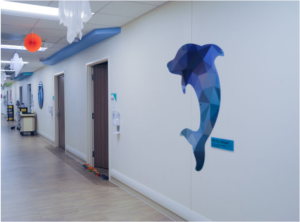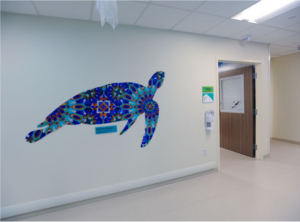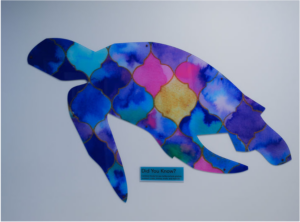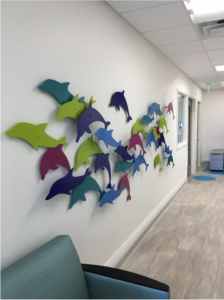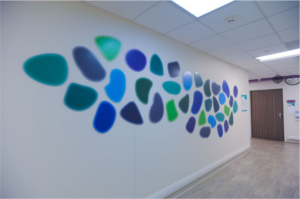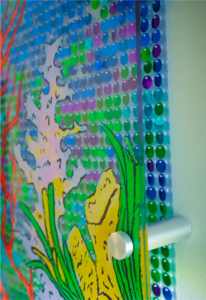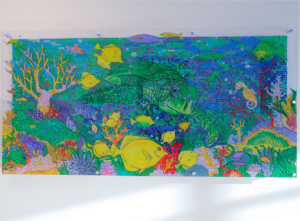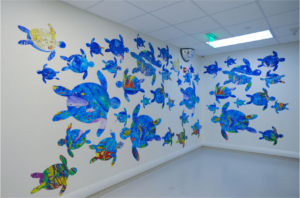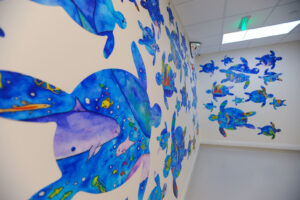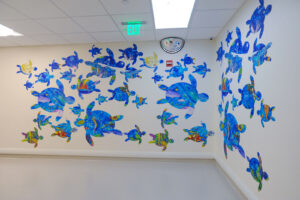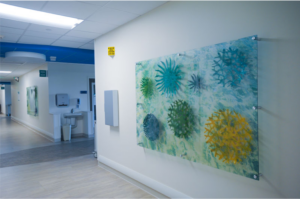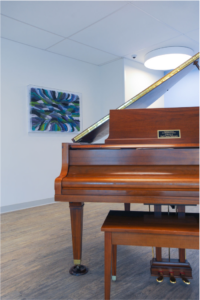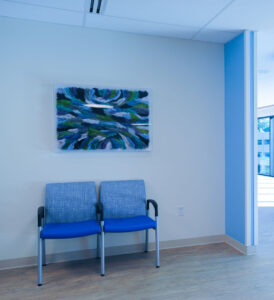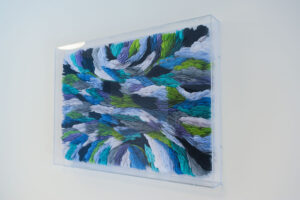The Backstory:
Designing for pediatrics in general poses unique challenges. Every piece of artwork in the space must have an exact function. Each piece needs to have a purpose in helping to heal. This is accomplished by using a variety of approaches from destination art pieces that engage inquisitive minds, to installations that inspire movement, to pieces that offer an opportunity for education. All enhance the space while offering that extra level of care.

Designers Vision
Our designer worked closely with this pediatric hospital, and found that they really wanted something more than artwork. They were looking for interactive art that was more than décor. Their vision was to use art to:
The process started with our designer envisioning herself as a child walking through the space, then as a parent, and then as a staff member. She began to draft a design that would appeal to and positively impact these three very different points of view.

Promoting Movement
Large acrylic turtles and dolphins were created with the idea of physical therapy in mind, promoting movement by providing a goal for patients to reach during walks in the hallways. Each piece is also accompanied by facts about that animal for a more intellectually enriching experience.
Custom-made wall sculptures add whimsy and fun and become a focal point to a corridor. For pediatric art, it is important to design pieces that invite participation. Questions such as: How many dolphins can you count? Do dolphins travel in pods? Where do you think these dolphins are going? Questions such as these help to open up conversations between patients and caregivers, which is an important aspect of healing.

Curious Minds
Shimmer wall installations provide a high level of interactivity in a simple, yet dynamic presentation. Comprised of many small shimmering disks that are strung together, they move independently as well as collectively, mimicking the movement of water. Artwork printed on an acrylic panel is mounted with standoff hardware above the shimmering panel, adding physical dimension and a playful sense of child-like wonder for marine life and seascapes.

Express Inner-Feelings
The Sea Turtle Stories wall was created as a destination, where children could spend some time looking at each turtle. Different details can be found within each image (tiny fish, a whale’s face, a mermaid tale, etc). This opens the door for conversation with patients, which could give the staff information about the patient’s well-being. Using their imagination through interaction with pieces such as this can help them to voice their feelings or whatever it is bothering them.

Visual Accessability
The coral bowls were designed for the NICU to present a sophisticated piece of artwork that offered a reflective moment for adults while still feeling light and airy for children. Acrylic fronts protect the pieces from harm from curious hands or wayward carts or beds. This example depicts an engaging approach to creating dynamic visual art installations that are accessible to a variety of ages, from children to adults.
In this waiting room, primarily used by parents awaiting word on their child, the piece was created by a local artist who had to change how she created art when her husband developed a condition that made him severely allergic to chemicals, including paint. Her new medium is torn paper cut in very small pieces resulting in textured art that is so stunning up close and from a distance just dances on the wall. This allows for a visual texture as well as an opportunity for viewers to connect with the artist and the struggles she has faced; allowing the human experience to establish a helping connection.

Conclusion
Regardless of the approach one thing remains clear, the result should be an environment with aesthetic variation, distraction, and engagement that can help children maintain a positive outlook that contributes to their well-being and supports their healing. Each piece has its purpose in helping to heal; motivating and raising the spirits for even the youngest patient.(Bishop, 2012)
REFERENCE
Bishop, Kate. The Role of Art in the Pediatric Healthcare Environment from the Children’s and Young People’s Perspectives. Social and Behavioral Sciences 38 (2012), 81-88.
